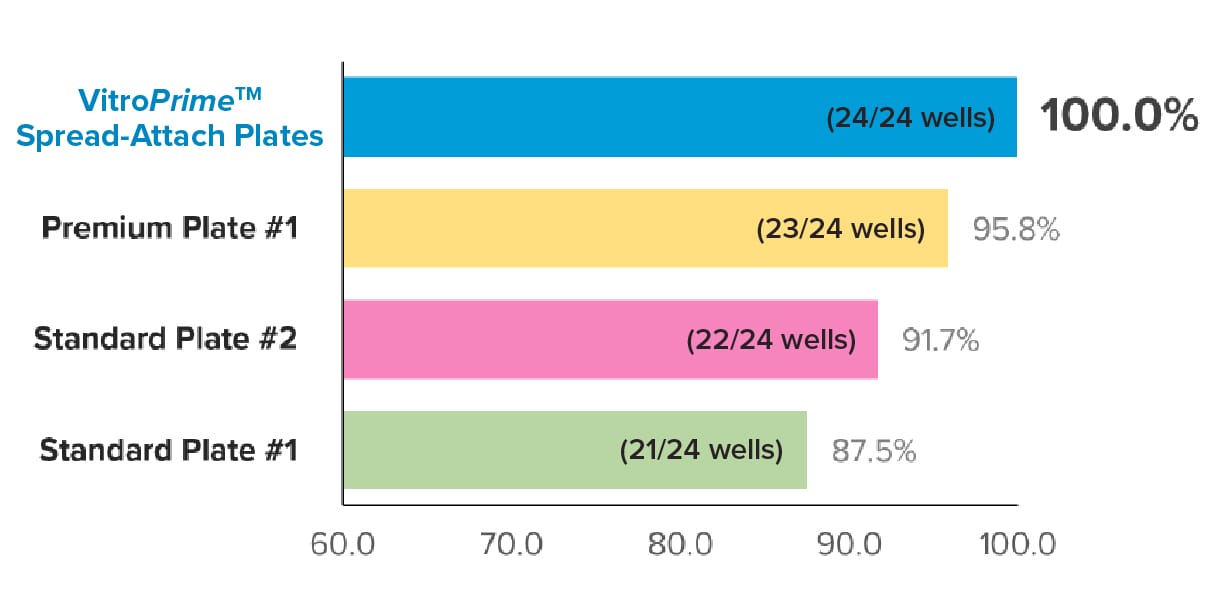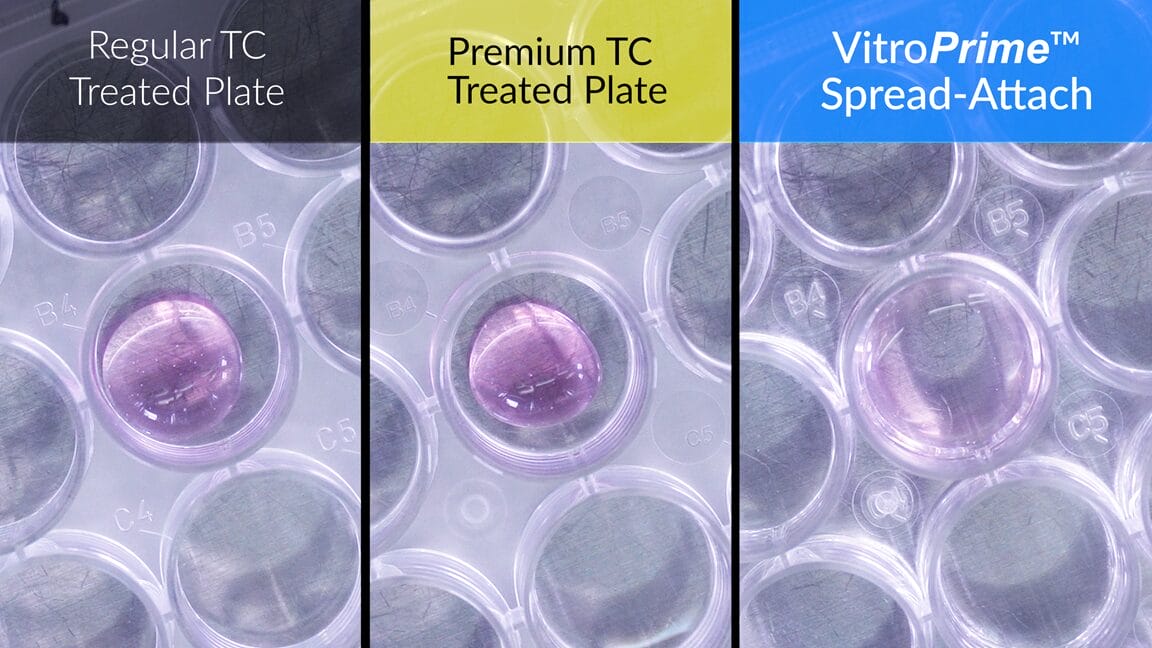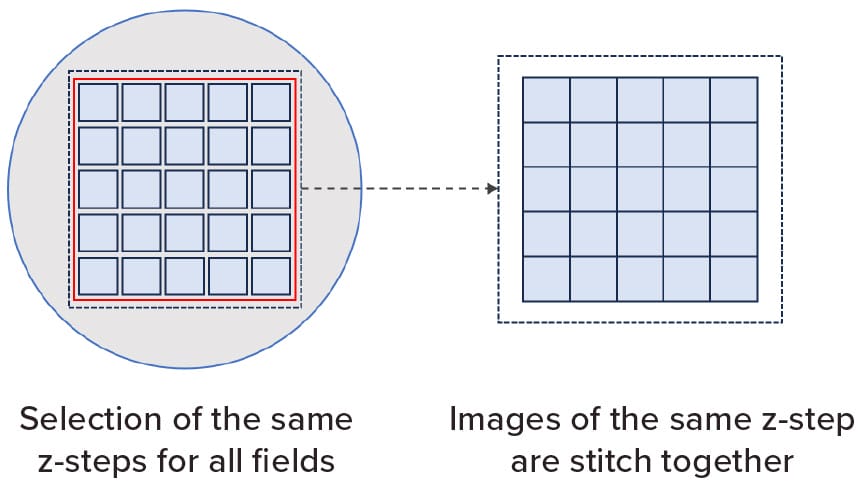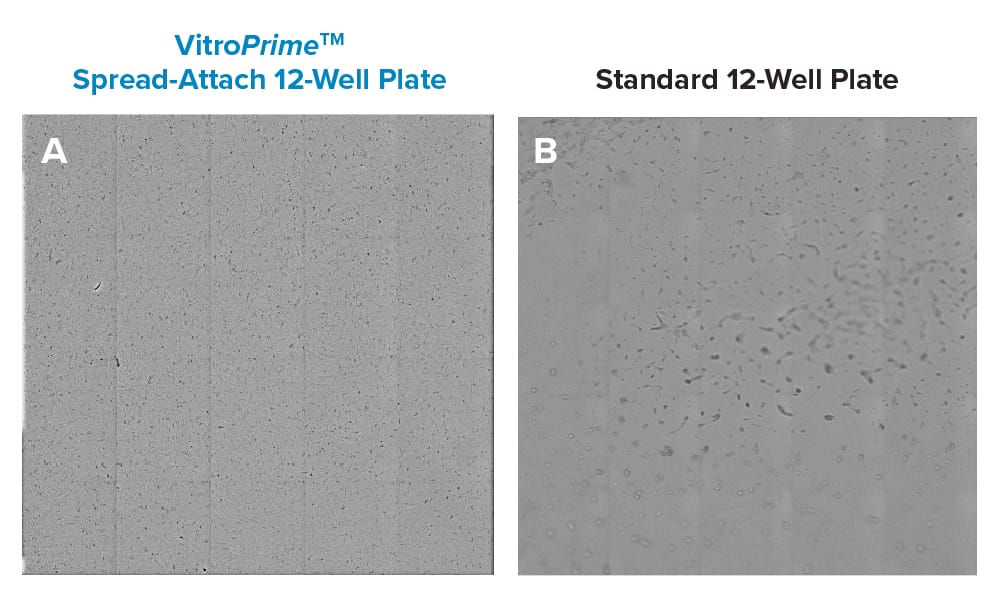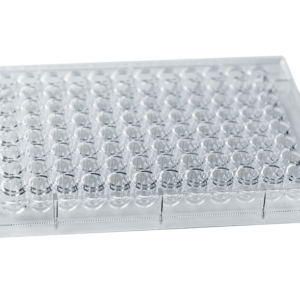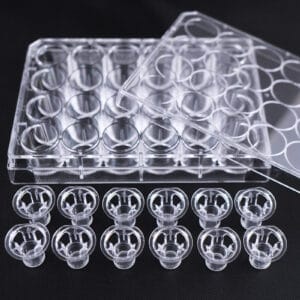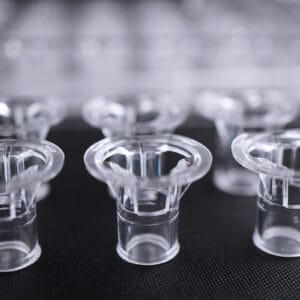![]() Product Data Sheet – VitroPrime™ Spread-Attach Plate – 6-well
Product Data Sheet – VitroPrime™ Spread-Attach Plate – 6-well![]() Product Data Sheet – VitroPrime™ Spread-Attach Plate – 12-well
Product Data Sheet – VitroPrime™ Spread-Attach Plate – 12-well![]() Product Data Sheet – VitroPrime™ Spread-Attach Plate – 24-well
Product Data Sheet – VitroPrime™ Spread-Attach Plate – 24-well![]() Product Data Sheet – VitroPrime™ Spread-Attach Plate – 48-well
Product Data Sheet – VitroPrime™ Spread-Attach Plate – 48-well![]() Product Data Sheet – VitroPrime™ Spread-Attach Plate – 96-well
Product Data Sheet – VitroPrime™ Spread-Attach Plate – 96-well
VitroPrime™ Spread-Attach Plate
Unique surface treated for superior hydrogel spreading, adherence, and uniform surface.

Premium VitroPrime™ Spread-Attach Plates
Offering unparalleled advantages for hydrogel-based 3D and 2D cell culture applications, the VitroPrime™ Spread-Attach Plates, with a unique surface treatment for superior hydrogel spreading, adherence, and uniform surface to eliminate the edge effect, solve the floating issue, and uneven cell attachment to help promote rapid cell growth and improve cell yields.
When used with the VitroGel® hydrogel system, achieve more reproducible, consistent data even for challenging cell types requiring more uniform cell adherence and “unlock” for full automation potential.
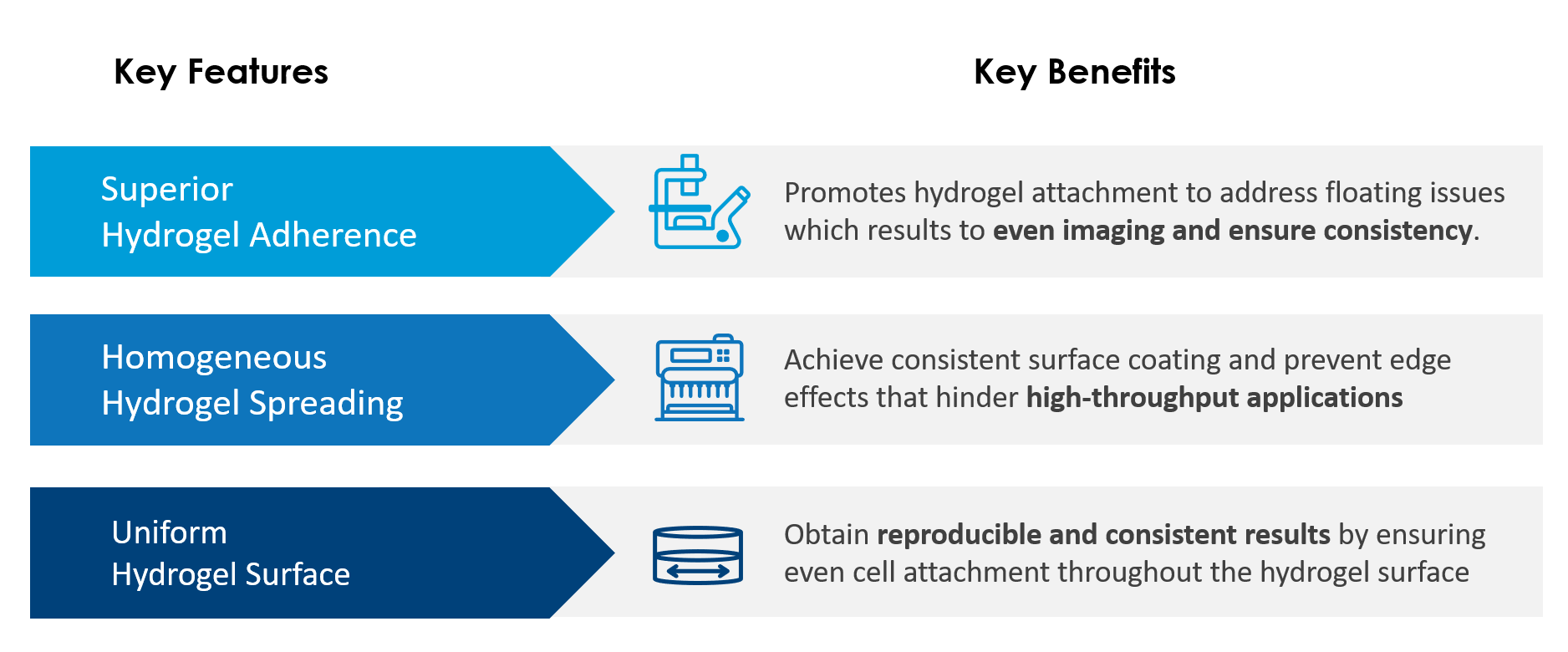
Specifications
| Material | Polystyrene (GPPS) |
| Packaging | 5 packs/case, 50 packs/case |
| Well Plate Type | 6-well, 12-well, 24-well, 48-well, 96-well |
| Cell Growth Area (cm2) | 9.5 cm2 (6-well) 3.9 cm2 (12-well) 1.9 cm2 (24-well) 0.7 cm2 (48-well) 0.3 cm2 (96-well) |
| Well Profile | Flat Bottom |
| Treated Surface | Yes |
| Sterile | Yes |
| Other Data | DNase/RNase-free, non-pyrogenic |
Data and References
Hydrogel Floating
(Standard TC Plate)
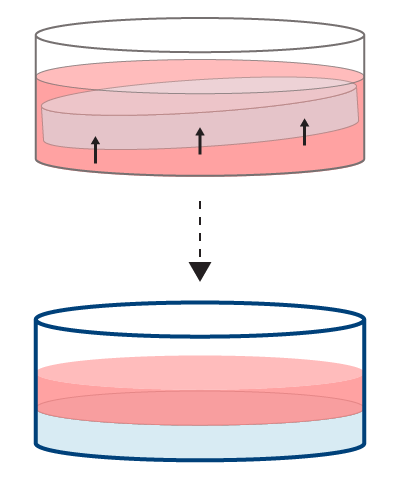
Superior Hydrogel Adherence
(VitroPrime™ Spread-Attach Plate)
Hydrogel Floating occurs after adding medium to wells with hydrogel, which can affect testing, imaging, and repeatability.
VitroPrime™ Spread-Attach Plates promote hydrogel attachment to address floating issues, resulting in even imaging and ensuring consistency.
Prevent Hydrogel Floating
Comparison of Hydrogel Adherence – VitroPrime™ Spread-Attach v. Others
We investigated the effectiveness of VitroPrime™ Spread-Attach and three other cell culture plates in mitigating the hydrogel floating issue using VitroGel® ORGANOID-3 hydrogel (Catalog # VHM04-3).
The method involves combining hydrogel and basal medium in a 2:1 ratio, followed by adding 300 µL of VitroGel® ORGANOID-3 hydrogel mixture to each well of the 24-well plates. The hydrogel is incubated for 20 minutes, after which 300 µL of cover medium is added on top. The plates are then incubated at 37°C to assess the ability of VitroPrime™ Spread-Attach Plate to prevent hydrogel floating.
Figure 2. Comparison of hydrogel adherence on four different quality 24-well plates in 48 hours.
A. VitroPrime™ Spread-Attach 24-Well plate exhibits perfect hydrogel adherence in all 24 wells. B. Premium Plate #1 showcases hydrogel adherence in 23 out of 24 wells. C. Standard Plate #2 exhibits hydrogel adherence in 22 out of 24 wells. D. Standard Plate #1 demonstrates hydrogel adherence in 21 out of 24 wells.
Ineffective Gel Spreading
(Standard TC Plate)
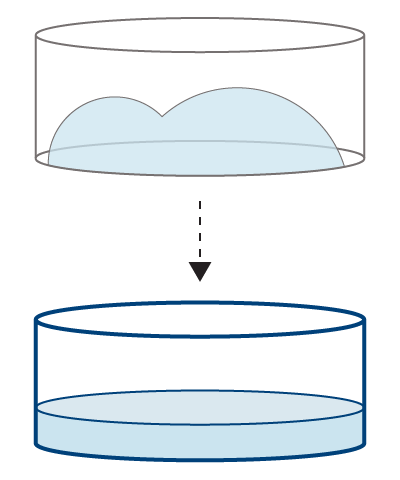
Homogeneous
Hydrogel Spreading
(VitroPrime™ Spread-Attach Plate)
Ineffective gel spreading leads to inconsistent cell distribution, which hinders high-throughput applications and compromises the reproducibility of cell-based assays.
With VitroPrime™ Spread-Attach Plates, achieve consistent surface coating and prevent edge effects for high reproducibility.
Eliminate Edge Effect
Effective hydrogel surface coating with VitroPrime™ Spread-Attach Plate
Figure 1. An overhead view captures the hydrogel mixture distribution across three distinct tissue culture-treated plates (Regular TC, Premium TC, VitroPrime™ Spread-Attach).
The hydrogels did not distribute homogeneously throughout the surface in the regular and premium tissue culture-treated plates. In contrast, VitroPrime™ Spread-Attach Plate ensures even spreading of the hydrogel.
Uneven Hydrogel Surface
(Standard TC Plate)
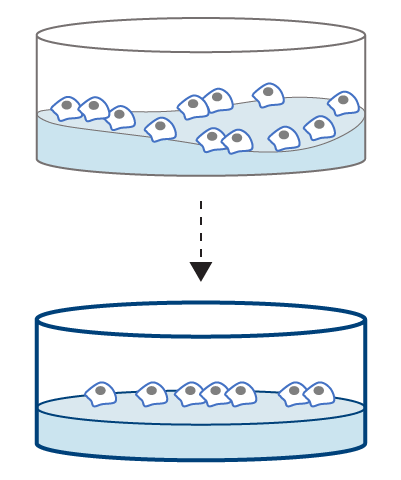
Uniform Hydrogel Surface
(VitroPrime™ Spread-Attach Plate)
An uneven hydrogel surface can cause cell distribution at different z-levels above the hydrogel, resulting in inconsistent data generation and difficulty in imaging.
Ensure even cell attachment to the surface with VitroPrime™ Spread-Attach Plates and obtain consistent data.
More Even Hydrogel Surface
Evaluating Gel Spreading and Cell Attachment
VitroPrime™ Spread-Attach 12-Well Plate v. Standard 12-Well Plate
We compared two 25-stitched z-planes capturing OP9 cells in the VitroGel® Hydrogel Matrix within 12-well plates: a VitroPrime™ Spread-Attach 12-Well Plate and a standard 12-well plate. The images were compiled by selecting the z-plane with the 2D projection on each plate and stitched to evaluate cell attachment and the flatness of the hydrogel surface. Notably, VitroPrime™ Spread-Attach 12-Well Plate demonstrated superior performance, ensuring a flat hydrogel surface for even gel spreading and cell attachment.
Figure 3. A comparison of two 25-stitched z-planes within a well of the 12-well plates.
A. VitroPrime™ Spread-Attach 12-Well Plate exhibits a flat hydrogel surface, facilitating homogeneous cell spreading and attachment on the same plane. B. The standard 12-well plate exhibits an uneven hydrogel surface, as evidenced by the presence of attached cells in different focus planes.
| Plate Size | 6-well, 12-well, 24-well, 48-well, 96-well |
|---|---|
| Pack Size | 5 Packs/Case, 50 Packs/Case |







